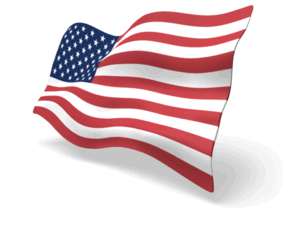Get Expert Advice to Study in USA
Study in USA
Capital
Washington D.C
Population
341 million
Language
English
Currency
USD (~ INR 80)
Major Cities
New York
Los Angeles
Boston
Massachusetts
Top Universities
MIT
Harvard
Stanford
University of California Berkley
Cornell
Caltech
No. of International Students
1,057,188
Best Country to Study Abroad Ranking
2
Why Study in USA?
Indian students are increasingly opting for the United States as their preferred destination for higher education as it boasts a world-renowned education system with numerous top-ranked universities and colleges across various disciplines. These institutions are known for their cutting-edge research, innovative teaching methodologies, and a diverse range of academic programs that cater to the evolving needs of students. The emphasis on practical, industry-relevant skills, along with access to state-of-the-art facilities, makes pursuing higher education in the USA an attractive prospect for Indian students seeking a globally competitive edge in their chosen fields.

Furthermore, the USA provides a multicultural environment that fosters exposure to different perspectives, ideas, and cultures. This exposure not only enriches the educational experience but also prepares students for a globalized workforce. The Optional Practical Training (OPT) program allows international students to gain valuable work experience in their field of study for up to three years after graduation, making the USA a strategic choice for those aspiring to kickstart their careers on an international scale.
Popular Courses to Study in USA

Engineering & Technology

Computer Science & Information Technology

Business Administration & Management

Health Sciences &
Medicine

Social Sciences &
Humanities

Environmental Science & Sustainability

Media & Communication Studies
Documents Required by International Students for Admission
Academic Transcripts
Standardized Test Scores: Scores from standardized tests such as the SAT (for undergraduate programs) or GRE/GMAT (for graduate programs) are required. Additionally, proof of English proficiency through tests like the TOEFL or IELTS is typically necessary unless the medium of instruction in your previous academic institution was English.
Letter(s) of Recommendation (LOR)
Statement of Purpose (SOP) or Personal Essay
Passport
Financial Documents
Visa Documentation: Once accepted into a U.S. institution, you'll need to apply for a student visa (F or J visa). This involves completing the DS-160 form, paying the visa application fee, and scheduling an interview at the U.S. embassy or consulate. You will also need the Form I-20 (for F visa) or DS-2019 (for J visa) issued by the institution.
Health Insurance
Other Specialized Documents: Depending on your course of study, there may be additional requirements such as a portfolio for art-related programs or a research proposal for doctoral studies.
Intakes for Study in USA
Spring Intake:
January
Summer Intake:
May
Fall Intake:
September
Step by Step Application Procedure for International Students
Research & Choose a Program
Check Admission
Requirements
Prepare for Standardized Tests: SAT/GMAT/GRE & TOEFL/IELTS
Request Transcripts & Letters of Recommendation
Prepare a Strong Statement of Purpose (SOP)
Complete the Application Form
Submit Application Fee
Submit Standardized Test Scores
Secure Financial Support
Receive Admission Offers
Apply for a Student Visa
Attend Visa Interview
Travel to the USA
Attend Orientation & Register for Classes
In Pursuit of the Best Study Abroad Options
Expert advice, quick admissions and hassle free student visa for the top ranked universities from the study abroad specialists.
Cost of Education
Undergraduate Programs:
Tuition for undergraduate programs at public universities can range from $20,000 to $40,000 (INR 16,00,000 – 32,00,000) per year. Private universities often have higher tuition costs, typically ranging from $30,000 to $60,000 (INR 24,00,000 – 48,00,000) or more per year.
Graduate Programs:
The F-1 visa is the most common visa for international students pursuing academic programs at U.S. universities, colleges, and other educational institutions. Allows for on-campus employment and, in some cases, off-campus employment through Optional Practical Training (OPT) after completing studies.
Living Cost
Accommodation:
$8,000 to $15,000 (INR 6,40,000 – 9,00,000) per year.
Meals:
$3,000 to $6,000 (INR 2,40,000 – 4,80,000) per year
Transportation:
$50 to $150 (INR 4,000 – 12,000) per month
Books and Supplies:
$500 to $1,000 (INR 40,000 – 80,000) per year
Miscellaneous Expenses:
$1,200-3,600 (INR 96,000 – 2,88,000) per year
Part Time Work Allowance for International Students
On-Campus Employment
- F-1 visa students are generally allowed to work on-campus for up to 20 hours per week during the academic year (when school is in session) and full-time during official school breaks and vacations.
- J-1 visa students may engage in on-campus employment similar to F-1 students, with the permission of their Responsible Officer (RO) or Alternate Responsible Officer (ARO).
Off-Campus Employment
- Off-campus employment options for international students are more restricted and typically require authorization from USCIS or the U.S. Department of State.
Student Visa & Post Study Work Visa for International Students
Student Visa
Fee-Paying Student Visa (International Student Visa)
F-1 Visa:
The F-1 visa is the most common visa for international students pursuing academic programs at U.S. universities, colleges, and other educational institutions. Allows for on-campus employment and, in some cases, off-campus employment through Optional Practical Training (OPT) after completing studies.
J-1 Visa:
The J-1 visa is for exchange visitors and is commonly used for students participating in exchange programs, research scholars, and professors. May include the option for Academic Training (AT) for work experience related to the student's field of study.
Post-Study Work Visa
Optional Practical Training (OPT):
F-1 visa students may be eligible for OPT, allowing them to work in their field of study for up to 12 months after completing their program. STEM (Science, Technology, Engineering, and Mathematics) degree holders may qualify for a 24-month extension. Students must apply for and receive Employment Authorization Document (EAD) approval from USCIS before engaging in OPT.
Curricular Practical Training (CPT):
CPT is another form of work authorization for F-1 students, allowing them to gain practical training experience directly related to their academic program. CPT can be part-time (20 hours per week or less) during the academic year or full-time during authorized breaks.
STEM OPT Extension:
F-1 students who have completed a STEM degree (Science, Technology, Engineering, or Mathematics) may be eligible for a 24-month extension of their OPT. The extension is designed to provide additional work experience in the U.S. in a STEM field.
H-1B Visa:
The H-1B visa is a non-immigrant visa that allows U.S. employers to temporarily employ foreign workers in specialty occupations. Some international students may transition to an H-1B visa if they secure a job offer from a U.S. employer.
Scholarship Options for Study in USA
Several scholarships are available to Indian students pursuing higher education in the USA, providing financial assistance for tuition, living expenses, and other educational costs. Here are a few prominent scholarships for Indian students:
- AAUW International Fellowships
- American University Emerging Global Leader Scholarship
- BUTEX Scholarship for Indian Students
- Fulbright-Nehru Master's Fellowships
- Humphrey Fellowship Program
- Inlaks Shivdasani Foundation Scholarships
- MIT Tata Center Fellowships
- Rotary Foundation Global Grant Scholarships
- Stanford Reliance Dhirubhai Fellowship
- Tata Scholarships for Cornell University
In Pursuit of the Best Study Abroad Options
Expert advice, quick admissions and hassle free student visa for the top ranked universities from the study abroad specialists.
FAQs
A: Research universities based on your academic interests, program reputation, faculty, and available resources. Consider location, campus culture, and potential for internships or research opportunities.
A: Most universities require standardized test scores such as TOEFL or IELTS to demonstrate English proficiency. Check the specific requirements of the universities you’re interested in.
A: Tuition costs vary, and additional expenses include living costs, books, and health insurance. Many universities offer scholarships, and there are external scholarships for Indian students as well.
A: Yes, international students on F-1 visas are generally allowed to work part-time on campus. Optional Practical Training (OPT) and Curricular Practical Training (CPT) are also available for gaining work experience.
A: After receiving an acceptance letter from a U.S. institution, apply for an F-1 visa. Attend a visa interview, pay the required fees, and provide necessary documents, including the Form I-20 from the university.
A: Universities often assist with on-campus housing. Alternatively, explore off-campus options, such as apartments or shared housing. Start your search early, considering safety and proximity to campus.
A: Yes, you may be eligible for Optional Practical Training (OPT) or other work visas. Some students may transition to H-1B visas for employment in specialized occupations.
A: Attend orientation sessions, engage in campus activities, and seek support from international student services. Familiarize yourself with academic resources and connect with peers.
A: Yes, many universities have Indian student associations. Additionally, there are Indian communities in various cities. Engage in cultural events and connect with fellow Indians for support.
A: Regularly check the U.S. Citizenship and Immigration Services (USCIS) website and stay in touch with your Designated School Official (DSO) for updates on regulations and compliance.


